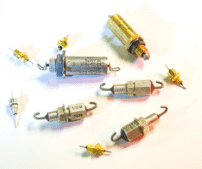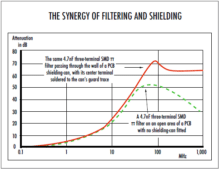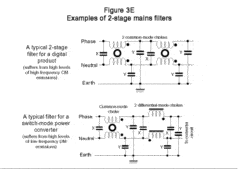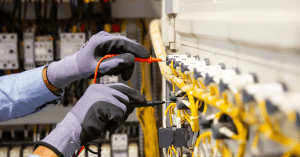This article is the 3rd and final part of a three-part Filter Installation Issues series. Read Part 1: Input and Output Conductors here. Read Part 2: The Synergy of Filtering and Shielding here. There are now many suppliers of PCB-mounted shielding-cans that can be used with three-terminal filters, and they have many types that can be automatically assembled like any … [Read more...]
Filter Installation Issues Pt. 2: The Synergy of Filtering and Shielding
This article is part 2 of a three-part Filter Installation Issues series. Read Part 1: Input and Output Conductors here. Some mains filter manufacturers only design and specify their filters to provide attenuation over the frequency range of the conducted emissions tests (typically up to 30MHz for commercial and industrial products), to keep costs low. Unfortunately, if … [Read more...]
Filter Installation Issues: Input and Output Conductors
Real-life filter performance is totally dependant on how they are installed, especially on the impedance of the RF Reference and the impedance of the method used to electrically bond the filter to its RF Reference. Not only should these impedances be much lower than that of the shunt capacitors in the filters, they should also allow the internal and external CM surface currents … [Read more...]
Designing and Selecting Filters: Using Soft Ferrite Cores
All inductors (L) suffer from RF resonances, and are only effective in filters at frequencies not far above their first (parallel) resonance (see section 1.8.1 of [7]). But so-called ‘soft ferrites’ behave resistively at RF, and the resulting lack of RF resonances helps make filters that use them have better and more predictable performance at RF. For example, a typical small … [Read more...]
Designing and Selecting Filters: Maximizing Impedance Discontinuities
To design effective filters we must maximize impedance discontinuities, at the frequencies of concern for emissions and/or immunity. Capacitors are used in conjunction with the RF Reference Plane (see Figure 1) to create low impedances, applied in shunt, whilst resistors or inductors are used to create high impedances, applied in series. When the source and … [Read more...]
Designing and Selecting Filters: Differential Mode and Common Mode
Differential-mode (DM) and Common-mode (CM) Wanted signals are always DM: they flow along the ‘send’ conductor, and flow back along the ‘return’ conductor(s). In single-ended signalling, all the return currents share a common conducting structure, usually the 0V of the DC power distribution system. In balanced (or ‘differential’) signalling there is a dedicated conductor for … [Read more...]
Designing and Selecting Filters: The Importance of RF Reference
The Importance of the RF Reference The RF Reference is the node on a circuit’s schematic that we define as our reference voltage when designing an RF circuit or measuring its performance. For the most cost-effective EMC, all circuits (digital, analogue, switch-mode, etc.) should now be designed using RF techniques. It is common practice to call the RF Reference ‘earth’ or … [Read more...]
Designing and Selecting Filters: How Filters Work
Ignoring all the poles and zeroes in the filter textbooks: filters work by creating an intentional discontinuity in the characteristic impedance of a current path, reflecting radio frequency (RF) energy away from a protected circuit, or absorbing the RF energy (converting it to heat) – rather like a shield does, as will be described in Part 4 of this series. The greater the … [Read more...]
Good SI, PI and EMC require this most of all…
Good SI, PI and EMC require a proper, grown-up understanding of electricity... Instead of what circuit designers are taught! As electronic designers, we were taught the children’s version of electricity at school, college, university, etc. This is the version that pretends (just as the SPICE simulator does) that electricity flows as little packets of charge totally inside … [Read more...]
Functional Safety, Risk Management, EMC and EMI
What is Functional Safety? The safety of products, systems and installations can be split into two parts: i) ‘Basic’ safety: electric shock, excessive temperatures, excessive radiation, fire, explosion, implosion, bruising, pinching, crushing, cutting, emissions of toxic fumes, etc. ii) ‘Functional’ safety: when things being controlled don’t function correctly … [Read more...]















